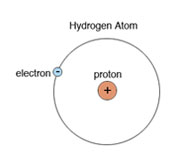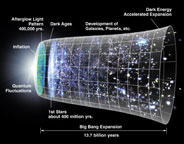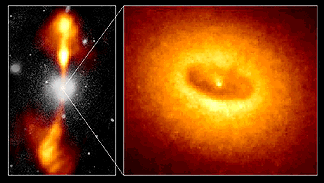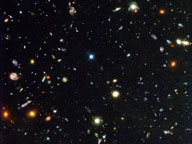| Dark Matter: Invisible, Mysterious and Perhaps Nonexistent By Robert Roy Britt Senior Science Writerposted: 10 October 2005 04:31 pm ET |
In astronomy and cosmology, dark matter is matter that neither emits nor scatters light or other electromagnetic radiation, and so cannot be directly detected via optical or radio astronomy.[1] Its existence is inferred from gravitational effects on visible matter and gravitational lensing of background radiation, and was originally hypothesized to account for discrepancies between calculations of the mass of galaxies, clusters of galaxies and the entire universe made through dynamical and general relativistic means, and calculations based on the mass of the visible "luminous" matter these objects contain: stars and the gas and dust of the interstellar and intergalactic medium. Many experiments to detect dark matter through non-gravitational means are underway.
~Wikipedia~Edited by:
Arip Nurahman
(Teacher and Professional Lecturer)
Guru dan Dosen Profesional
Department of Physics, Faculty of Sciences and Mathematics
Indonesia University of Education
and
Follower Open Course Ware at MIT-Harvard University, M.A., U.S.A.
and
Follower Open Course Ware at MIT-Harvard University, M.A., U.S.A.
Galaxies don't have enough regular matter to keep them from flying apart, scientists have been telling us for years. So there must be a bunch of unseen "dark matter" lurking in every galaxy.
But dark matter has never been directly detected, and nobody knows what it might be made of. A few scientists remeain skeptical. To a lay person, it might sound downright crazy.
Now a new study suggests there may be no such thing as dark matter.
Fred Cooperstock of Northeastern University and Steven Tieu at the University of Victoria say Einstein's theory of general relativity can explain the cohesiveness of individual galaxies including our Milky Way.
Here's the thinking:
Newton's laws of physics explain why our solar system stays together. But the planets are negligible in the overall gravitational scheme, with the Sun being the total ruler and containing 99.86 percent of all the mass.
The same Newtonian physics were long ago applied to galaxies, and the rotation of stars couldn't be explained, so dark matter was invented to make theory work.
But a galaxy is much different than the solar system, Cooperstock explains. The conglomeration of all the matter -- stars, black holes, gas, and dust -- is collectively the source of the galactic gravity. Even a black hole at a galaxy's center typically packs less than 1 percent of the galaxy's overall mass.
The overall galaxy's gravity "feeds its own motion ... unlike the case of the solar system," Cooperstock told SPACE.com.
The science of the new argument is complex, but here goes:
"In the galaxy case, having rotation, we have found that general relativity provides a very important potential that is connected to the density of the galactic matter in what we call a 'nonlinear' manner,'" Cooperstock says. "This is unlike Newtonian physics."
This nonlinear effect has been noted before. "The interesting twist is that this holds also for the simpler steady rotational motion under gravity as in the galaxy," he said.
The upshot: The motions of stars in galaxies "is realized in general relativity's equations without the need to invoke massive halos of exotic 'dark matter' that nobody can explain by current physics," Cooperstock said.
A small percent of what used to be considered dark matter is made of burned-out stars that are hard to see. Predictions for how much of that material exists would not change.
Also, the new idea does not yet explain how large clusters of galaxies bind together. Further research by other theorists might solve that problem too, however, Cooperstock said. The new analysis has been submitted to the Astrophysical Journal but has yet to be reviewed by other scientists.
If it is right?
"This would remove about 25 percent of the mass of the universe, the ultimate weight-reduction program," Cooperstock said.
- Missing Matter Found, Partially Squaring Cosmic Accounting Sheets
- Dark Matter Exposed: Animation Offers Clues to Cosmic Mystery
- Studies Pins Down Quantity, Size of Dark Matter in Universe
Arip Nurahman
Guru dan Dosen Profesional





























